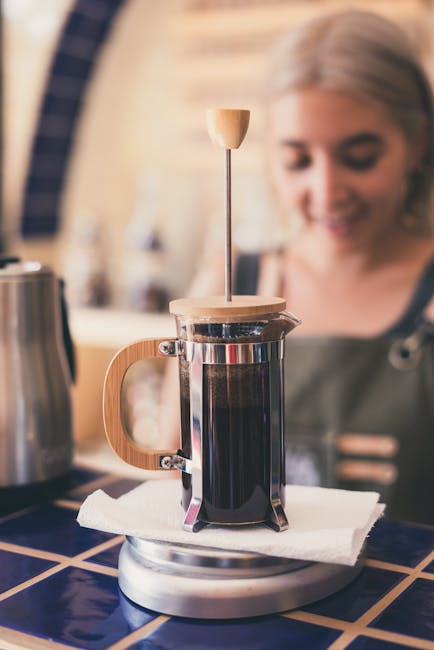Exploring Coffee Traditions Around the World: A Journey Through Global Coffee Culture
Coffee is more than just a beverage; it’s a universal language that bridges cultures and brings people together. From the bustling coffee houses of Vienna to the street-side cafes of Bangkok, each region has its own unique way of savoring this beloved drink. In this article, we’ll be exploring coffee traditions around the world: a journey through global coffee culture. Whether you’re a casual drinker or a hardcore enthusiast, you’ll find something fascinating in the various ways coffee is consumed and celebrated across continents.
The Middle Eastern Rituals
Let’s start our journey in the Middle East, where coffee drinking isn’t just a daily routine—it’s a deeply rooted tradition. Countries like Turkey and Yemen have some of the most iconic coffee customs. In Turkey, coffee is brewed in a special pot called a cezve, and the grounds are left in the cup, creating a thick and rich experience. Turkish coffee is often served with a side of sweets, and the preparation can involve unique rituals, like the fortune-telling practice of reading coffee grounds.
Yemen is home to the original Arabica coffee, and its coffee culture revolves around the ‘Gahwa’ tradition. Here, coffee is often flavored with spices like cardamom and served with dates. Sharing coffee in these regions symbolizes hospitality and friendship, highlighting the importance of communal experiences in coffee rituals.
European Elegance
Moving on to Europe, we find a range of coffee traditions that vary by country. In Italy, espresso is king. The Italians have perfected the art of making coffee, with local cafés bustling at every corner. Here, the practice of “caffè sospeso,” or “suspended coffee,” allows patrons to pay for an extra coffee that someone in need can claim later. It’s a beautiful representation of generosity intertwined with coffee culture.
Then there’s the traditional Viennese coffee house culture, recognized by UNESCO as an Intangible Cultural Heritage. These establishments are a haven for intellectual discussions, gossip, and artistic expression. A typical Viennese coffee often comes with a glass of water and a delicious pastry, providing a complete experience that combines leisure, conversation, and comfort.
The Heart of Latin America
In Latin America, coffee is not just a drink; it’s a vital part of life. Countries like Colombia and Brazil have thriving coffee industries and rich brewing traditions. In Colombia, coffee is often brewed using a “tinto” method, where a small cup of black coffee is served without milk, allowing the drinker to savor the rich flavors of locally grown beans.
Brazil, on the other hand, has embraced its coffee heritage with unique coffee ceremonies, such as the traditional Brazilian “Café com Leite” which blends strong black coffee with milk. The country’s coffee culture is rooted in celebration, with coffee often being served at family gatherings and festivities.
Asian Coffee Adventures
As we venture into Asia, we encounter intriguing coffee traditions that reflect the diverse cultures of the continent. In Vietnam, coffee is a cherished daily ritual, marked by the preparation of “cà phê sữa đá,” a strong drip coffee mixed with sweetened condensed milk and served over ice. The slow brewing process emphasizes the art of conversation among friends or family as they wait for the delicious brew.
In contrast, Indonesia showcases a unique style with its “Kopi Luwak,” or civet coffee, made using beans that have passed through the digestive system of civet cats. Although this coffee is often pricey and controversial due to ethical concerns, it highlights the diverse methods of coffee production and consumption in the region.
The Unique Growth of North America
In North America, especially the United States, the coffee culture has evolved rapidly over the past few decades. From high-end, artisanal cafes to the ubiquitous Starbucks, Americans are obsessed with all things coffee. The “Third Wave” coffee movement emphasizes quality, sustainability, and local sourcing, inviting people to appreciate the detailed flavors of single-origin coffees. Popular drinks like cold brew and nitro coffee have transformed the landscape, offering refreshing alternatives to traditional methods.
Moreover, community-focused coffee shops are cropping up everywhere, creating spaces for people to gather, work, and socialize—all centered around their love of coffee.
FAQs About Coffee Traditions
Q: What is the most popular coffee drink worldwide?
A: Espresso is widely considered the most popular coffee drink globally, serving as a base for other coffee drinks like lattes and cappuccinos.
Q: How do coffee traditions vary from one country to another?
A: Coffee traditions vary through brewing techniques, the type of coffee beans used, presentation, and the social rituals associated with drinking coffee.
Q: What role does coffee play in different cultures?
A: Coffee often symbolizes hospitality, community, and bonding. It acts as a social lubricant, enhancing conversations and gatherings.
Q: Is there a difference between Arabica and Robusta coffee?
A: Yes! Arabica beans are generally considered to have a superior flavor and are grown at higher altitudes, while Robusta is stronger, more bitter, and contains more caffeine.
Conclusion
As we wrap up our exploration of coffee traditions around the world, it’s clear that this beloved beverage transcends borders, cultures, and traditions. From the hustle and bustle of Italian espresso bars to the serene atmosphere of Viennese coffee houses, and from the rich spices of Middle Eastern brews to the innovations of American coffee culture, each region celebrates coffee in its unique way. Exploring coffee traditions around the world: a journey through global coffee culture offers a deeper understanding of not just the drink itself, but the connections it fosters among people. Next time you savor a cup of coffee, take a moment to appreciate the rich history and culture that come with every sip!


